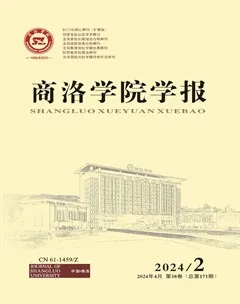一类二阶迭代函数方程有界光滑解的Lipschitz依赖性
石维维 薛秋梅



摘 要:为了研究一类二阶迭代函数方程的C1有界光滑解在C1上确界距离下对已知函数的Lipschitz依赖性,对已知函数的导数施加了Lipschitz条件,并引入新的度量,此度量代表原函数与导函数之间的关系。根据给出Lipschitz依赖性推导过程的相关引理,对其进行了证明,并运用引理计算迭代函数方程光滑解之间的距离,从而得出对已知函数的Lipschitz依赖性。
关键词:一类二阶迭代函数方程;连续函数;光滑解;Lipschitz依赖性
中图分类号:O175 文献标识码:A 文章编号:1674-0033(2024)02-0017-05
引用格式:石维维,薛秋梅.一类二阶迭代函数方程有界光滑解的Lipschitz依赖性[J].商洛学院学报,2024,38(2):17-21.
Lipschitz Dependence of Bounded Smooth Solutions
for a Class of Second Order Iterative
Function Equations
SHI Wei-wei, XUE Qiu-mei
(College of Mathematical Sciences, Chongqing Normal University, Shapingba 401331, Chongqing)
Abstract: In order to study the Lipschitz dependence of C1 bounded smooth solutions of a class of second-order iterated functional equations on known functions at a definite bounded distance on C1, a Lipschitz condition is imposed on the derivatives of the known functions and a new metric is introduced, which represents the relationship between the original function and the derivative function. The Lipschitz dependence on the known function is proved on the basis of the relevant lemmas giving the derivation of the Lipschitz dependence, and the lemmas are applied to compute the distance between smooth solutions of the iterated functional equation.
Key words: a class of second order iterative functional equation; continuous function; smooth solution; Lipschitz dependency
讓?: I→I是区间I上的自映射,它的n阶迭代是由?n(x)=?(?n-1(x))和?0(x)=x归纳定义的。当涉及未知映射迭代的泛函方程时,称它为迭代方程,它的一般形式是F(?(x),?2(x),…,?n(x))=g(x),其中F,g是已知函数,因此二阶迭代函数方程基本形式为F(?(x),?2(x))=g(x)。迭代方程在许多数学问题上应用广泛,如迭代根问题、不变曲线问题和Feigenbaum周期中的重整化问题。N.Brillouet-Belluot[1]提出了关于二阶迭代方程:
?2(x)=?(x+a)-x(1)
相关解情况的讨论。随后K.Baron[2]发现方程式(1)是由多元变量方程:
x+?(y+?(x))=y+?(x+?(y))
简化而来,且证明方程式(1)当a=0时,对应方程?2(x)=?(x)-x无连续解;当a≠0时,对应方程?2(x)=?(x+a)-x也无连续解。N.Br等[3]考虑了式(1)的一般形式之一,即
?2(x)=λ?(x+a)+μx(2)
其中λ,a,μ∈<\\Slb-g-ysc-7\本地磁盘 (e)\yp\杂志\商洛学院学报\2023-6\许思诗R.tif>,aλ≠0。证明了当|λ|>max{2,
2}且1+2|μ|<|λ|≤2在给定的任何紧致区间上,式(2)存在利普系希茨解。当0≤μ<1,λ≥2(1-μ)时,构造了式(2)在有界区间上的连续解。Zeng Y等[4]证明了当λ=1,μ≤-1时,式(2)在R上不存在连续解。当|λ|∈(2,+∞),μ∈
-
,或|λ|∈(1,2),μ∈(1-|λ|,|λ|- 1)时,式(2)在R上有连续解。文献[1-4]中都得到了λ,a,μ满足不同关系时方程式(2)解的情况,本文不再考虑方程解的情况,而是将λ,a,μ推广为函数f,h,g,

